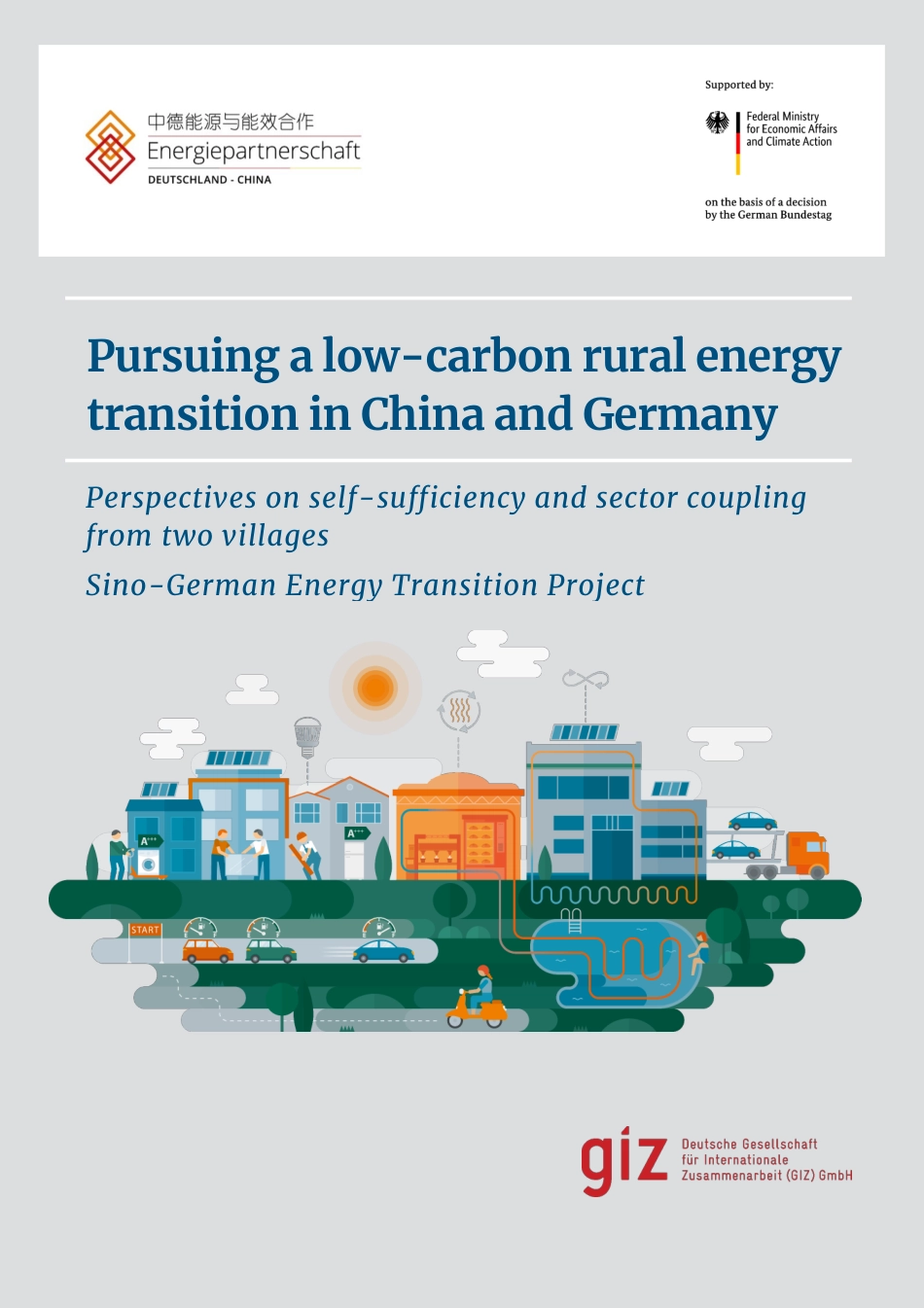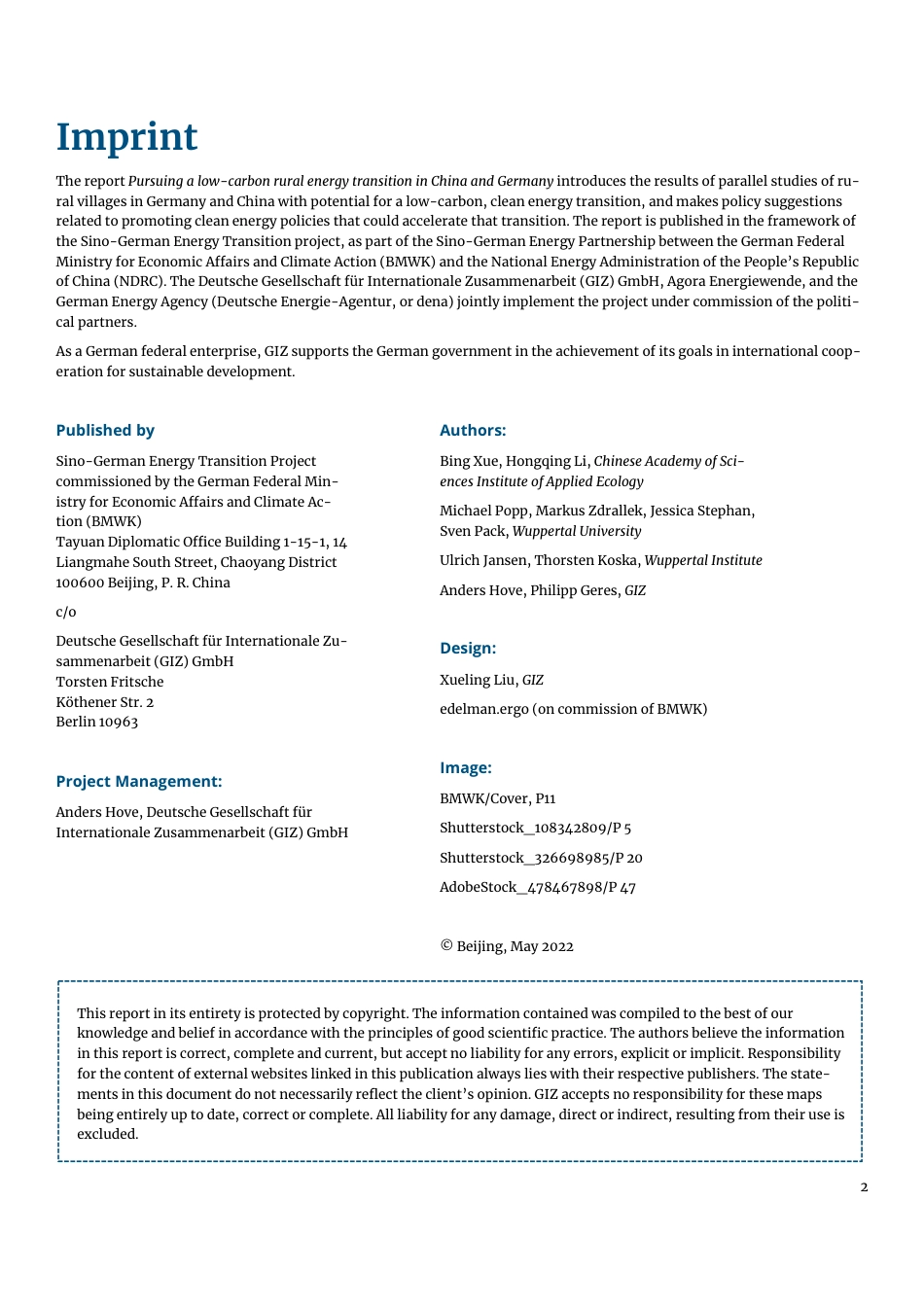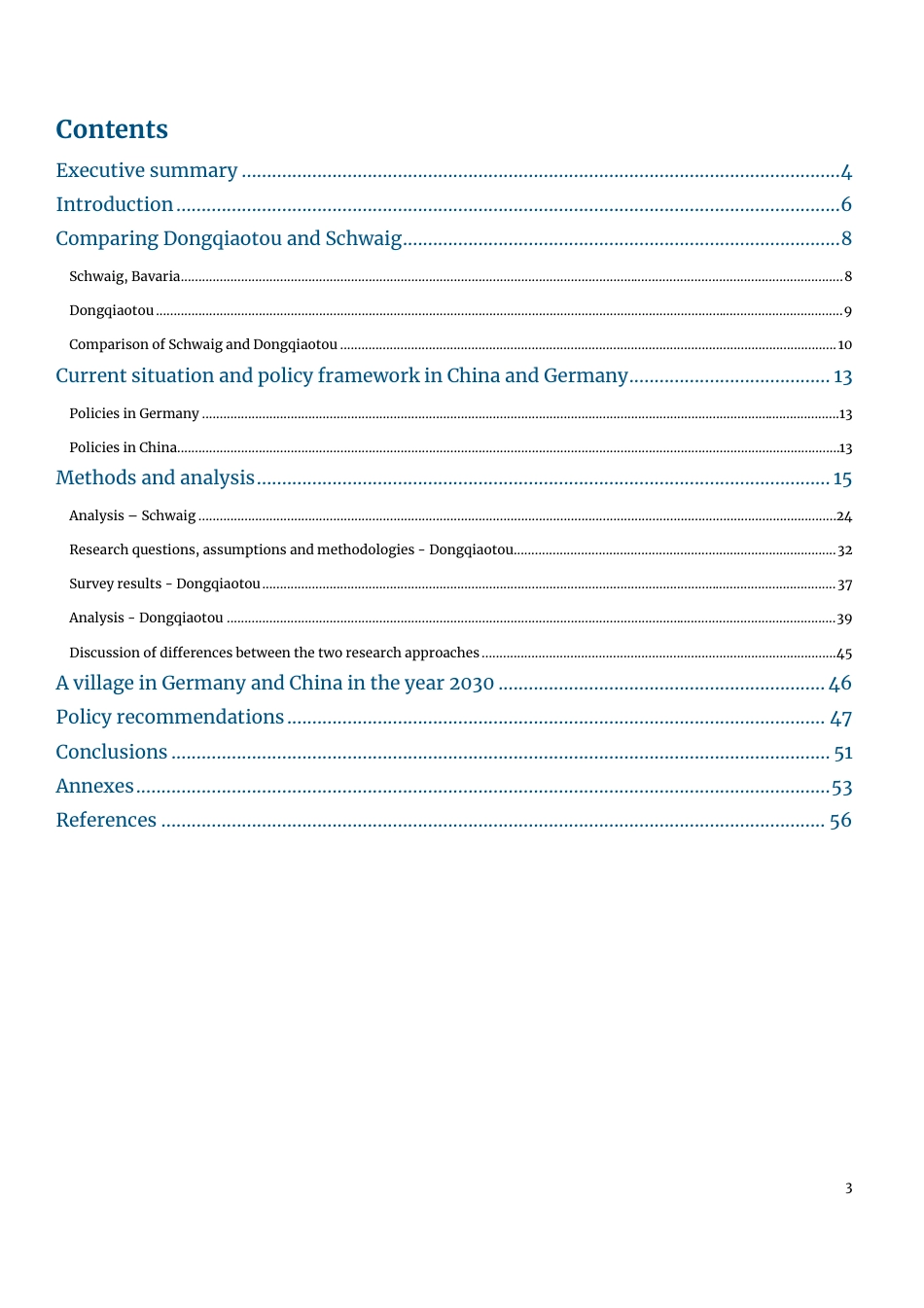1 Pursuing a low-carbon rural energy transition in China and Germany Perspectives on self-sufficiency and sector coupling from two villages Sino-German Energy Transition Project 2 Imprint The report Pursuing a low-carbon rural energy transition in China and Germany introduces the results of parallel studies of ru-ral villages in Germany and China with potential for a low-carbon, clean energy transition, and makes policy suggestions related to promoting clean energy policies that could accelerate that transition. The report is published in the framework of the Sino-German Energy Transition project, as part of the Sino-German Energy Partnership between the German Federal Ministry for Economic Affairs and Climate Action (BMWK) and the National Energy Administration of the People’s Republic of China (NDRC). The Deutsche Gesellschaft für Internationale Zusammenarbeit (GIZ) GmbH, Agora Energiewende, and the German Energy Agency (Deutsche Energie-Agentur, or dena) jointly implement the project under commission of the politi-cal partners. As a German federal enterprise, GIZ supports the German government in the achievement of its goals in international coop-eration for sustainable development. Published by Sino-German Energy Transition Project commissioned by the German Federal Min-istry for Economic Affairs and Climate Ac-tion (BMWK) Tayuan Diplomatic Office Building 1-15-1, 14 Liangmahe South Street, Chaoyang District 100600 Beijing, P. R. China c/o Deutsche Gesellschaft für Internationale Zu-sammenarbeit (GIZ) GmbH Torsten Fritsche Köthener Str. 2 Berlin 10963 Project Management: Anders Hove, Deutsche Gesellschaft für Internationale Zusammenarbeit (GIZ) GmbH Authors: Bing Xue, Hongqing Li, Chinese Academy of Sci-ences Institute...



